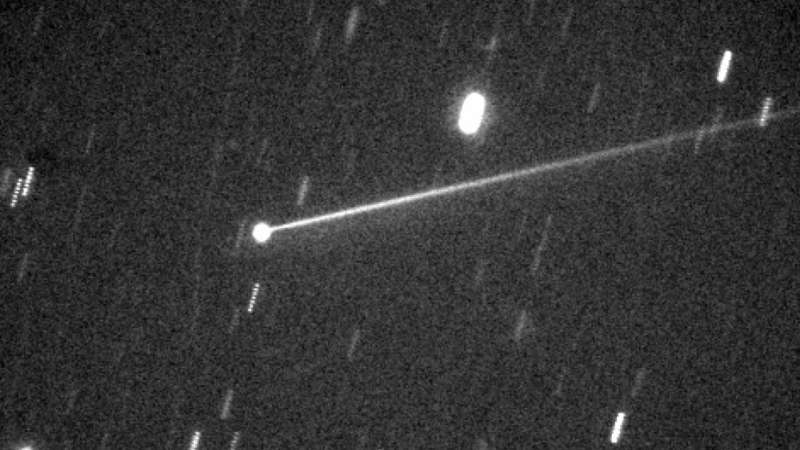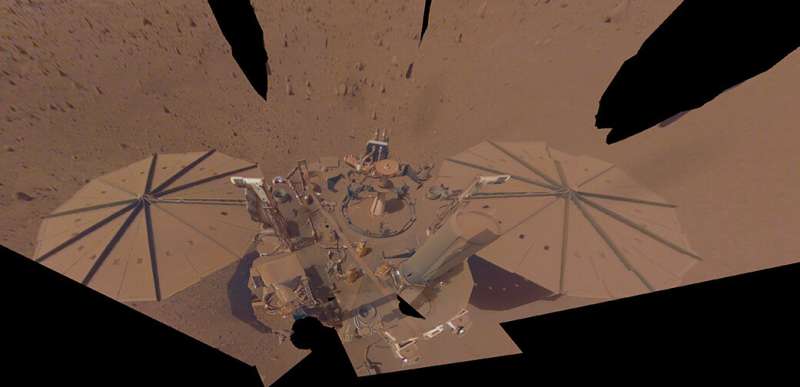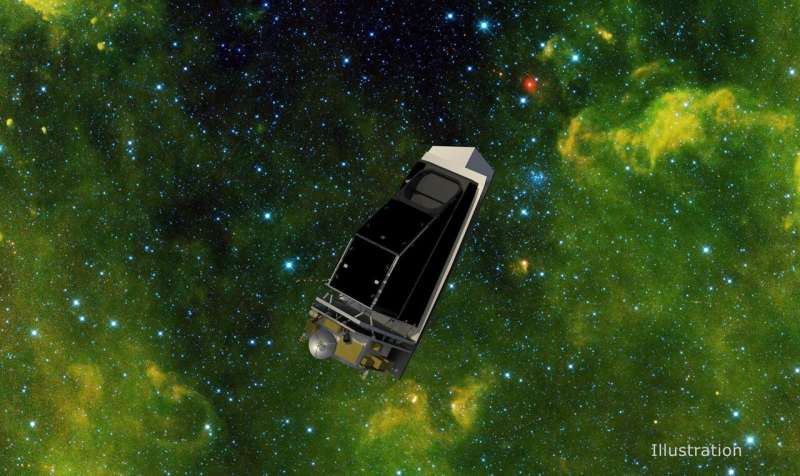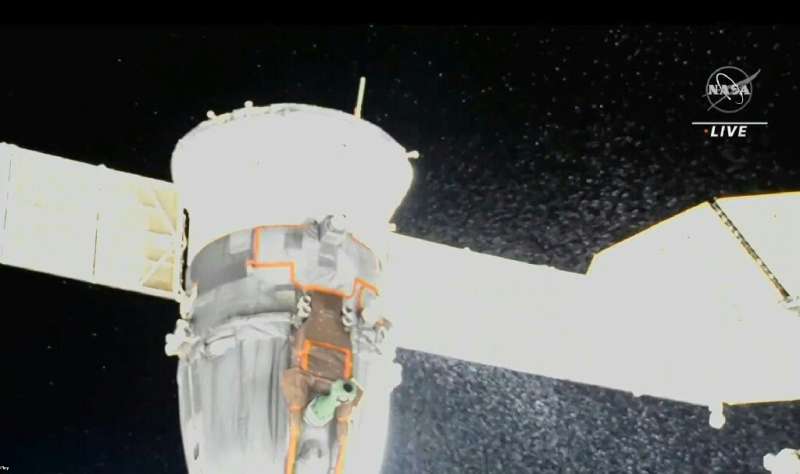
Copernical Team
NASA sets table for safe air taxi flights
 Edwards AFB CA (SPX) Dec 22, 2022
Tabletop exercises allow researchers to explore options and test scenarios in fields from military strategy and cybersecurity to disaster response planning. Now, NASA is using tabletop exercises to test how electric air taxis will fit safely into the national airspace - allowing passengers to one day hop across town or to a neighboring city by using new highway
Edwards AFB CA (SPX) Dec 22, 2022
Tabletop exercises allow researchers to explore options and test scenarios in fields from military strategy and cybersecurity to disaster response planning. Now, NASA is using tabletop exercises to test how electric air taxis will fit safely into the national airspace - allowing passengers to one day hop across town or to a neighboring city by using new highway Momentus announces 2nd Services Agreement with CUAVA
 Momentus Inc. (NASDAQ: MNTS), a U.S. commercial space company that plans to offer transportation and other in-space infrastructure services, has announced an agreement with the Australian Research Council Training Centre for CubeSats, Uncrewed Aerial Vehicles, and their Applications (CUAVA) for the transportation of the Waratah Seed WS-1 CubeSat to low-Earth orbit in October 2023.
The Wara
Momentus Inc. (NASDAQ: MNTS), a U.S. commercial space company that plans to offer transportation and other in-space infrastructure services, has announced an agreement with the Australian Research Council Training Centre for CubeSats, Uncrewed Aerial Vehicles, and their Applications (CUAVA) for the transportation of the Waratah Seed WS-1 CubeSat to low-Earth orbit in October 2023.
The Wara Iridium introduces its latest IoT data service
 Iridium Communications Inc. (Nasdaq: IRDM) has announced the service introduction of Iridium Messaging TransportSM (IMTSM), a two-way cloud-native networked data service optimized for use over Iridium Certus and designed to make it easier to add satellite connections to existing or new IoT solutions.
IMT provides an IP data transport service unique to the Iridium network, designed for smal
Iridium Communications Inc. (Nasdaq: IRDM) has announced the service introduction of Iridium Messaging TransportSM (IMTSM), a two-way cloud-native networked data service optimized for use over Iridium Certus and designed to make it easier to add satellite connections to existing or new IoT solutions.
IMT provides an IP data transport service unique to the Iridium network, designed for smal Mini satellite helps Macao students learn about space
 China recently deployed a mini satellite to a low-Earth orbit to help students in the Macao Special Administrative Region learn about spaceflight activities.
The 12-kilogram satellite, named Macao Student Science Satellite 1, was released into orbit by the Tianzhou 5 cargo spacecraft on Sunday, Ho Iat-seng, chief executive of the Macao SAR, announced on Tuesday as the region marked its 23r
China recently deployed a mini satellite to a low-Earth orbit to help students in the Macao Special Administrative Region learn about spaceflight activities.
The 12-kilogram satellite, named Macao Student Science Satellite 1, was released into orbit by the Tianzhou 5 cargo spacecraft on Sunday, Ho Iat-seng, chief executive of the Macao SAR, announced on Tuesday as the region marked its 23r NASA performs spacewalk to install solar array on space station
 NASA astronauts on Thursday morning successfully attached a solar array on the International Space Station after a piece of space junk was determined to be flying dangerously close to the orbiting laboratory.
Astronauts Josh Cassada and Frank Rubio began the spacewalk at 8:19 a.m. EST to install an International Space Station Roll-Out Solar Array, or iROSA, to augment power generation f
NASA astronauts on Thursday morning successfully attached a solar array on the International Space Station after a piece of space junk was determined to be flying dangerously close to the orbiting laboratory.
Astronauts Josh Cassada and Frank Rubio began the spacewalk at 8:19 a.m. EST to install an International Space Station Roll-Out Solar Array, or iROSA, to augment power generation f Chile's ALMA observatory resumes work after cyberattack
 The ALMA telescope in the Chilean Andes has resumed operations nearly two months after shuttering due to a cyberattack, the observatory said Wednesday.
ALMA, the world's most powerful telescope for observing molecular gas and dust, studies the building blocks of stars, planetary systems, galaxies and life itself, according to the European Southern Observatory (ESO), its co-operator.
The
The ALMA telescope in the Chilean Andes has resumed operations nearly two months after shuttering due to a cyberattack, the observatory said Wednesday.
ALMA, the world's most powerful telescope for observing molecular gas and dust, studies the building blocks of stars, planetary systems, galaxies and life itself, according to the European Southern Observatory (ESO), its co-operator.
The Early results from NASA's DART mission

As NASA's Mars InSight mission comes to an end, JPL engineers say farewell to its twin

Pranay Mishra reached down to the floor of his workplace and scooped a handful of what might be the closest thing on Earth to the feel of Martian soil.
"This is actually unprocessed garnet," he said, sifting the gray granules in his palm. Tiny ruby-colored flecks caught the light. Mixed with diatomaceous earth, a fine powder of algae fossils often used by gardeners, the coarse gray stuff makes a decent substitute for the density and texture of Mars' dirt. The only difference is that on Mars, no one has to clean it up.
"I've torn up three pairs of shoes working in this," the JPL systems engineer said with a laugh. "It follows you home. It's in your car, it's in your house—it's everywhere."
At some point in the next several weeks, a critical amount of actual Mars dust will cover the solar panels of NASA's InSight lander, which has been studying the red planet's crust, mantle, core and seismic activity since 2018. The batteries won't generate enough voltage to keep the spacecraft's instruments online.
Construction begins on NASA's next-generation asteroid hunter

Russia might send up rescue ship for ISS crew

Russia is examining the flight worthiness of a Soyuz crew capsule docked with the ISS that sprang a leak last week, and might need to send up a rescue vessel for stranded crew, officials said Thursday.
The vehicle, known as MS-22, began spraying its coolant into space on December 14, with dramatic NASA TV images showing white particles resembling snowflakes streaming out of the rear.
In a press briefing organized by the US space agency, Sergei Krikalev, who leads human spaceflight programs at Russia's Roscosmos, told reporters the damage was being assessed.

































